When I think about how to make an acrylic retail display case, I start with its popularity. Acrylic is light but strong. It is cheaper than glass. It is clear as crystal. I chose acrylic because it is easy to cut and shape. It resists shattering better than glass. This means it is safer. For retail stores, acrylic shows products clearly. Customers can see details without obstruction. It also reduces shipping costs because of its weight. I explain how to make acrylic retail display case step by step with materials, design tips, and assembly for cost-effective.
Table of Contents
ToggleUnderstanding Acrylic Display Cases
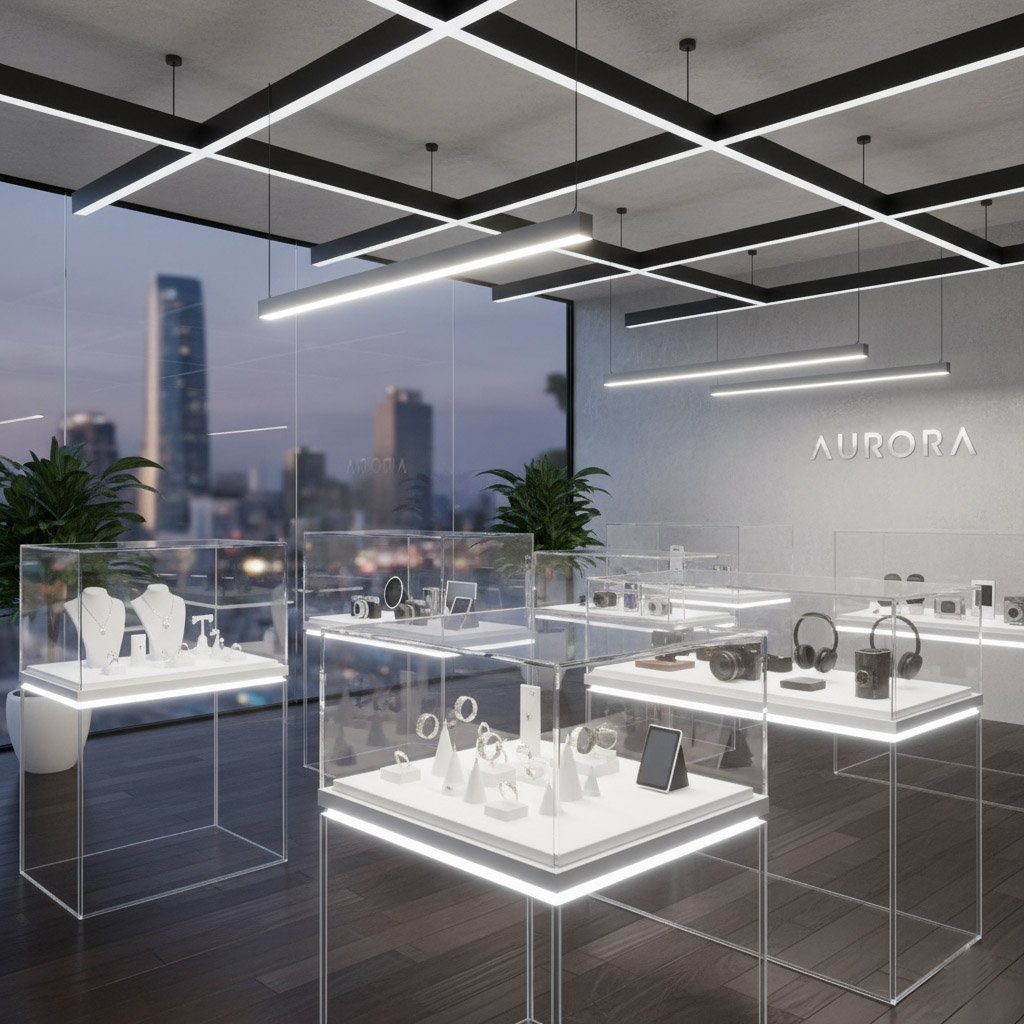
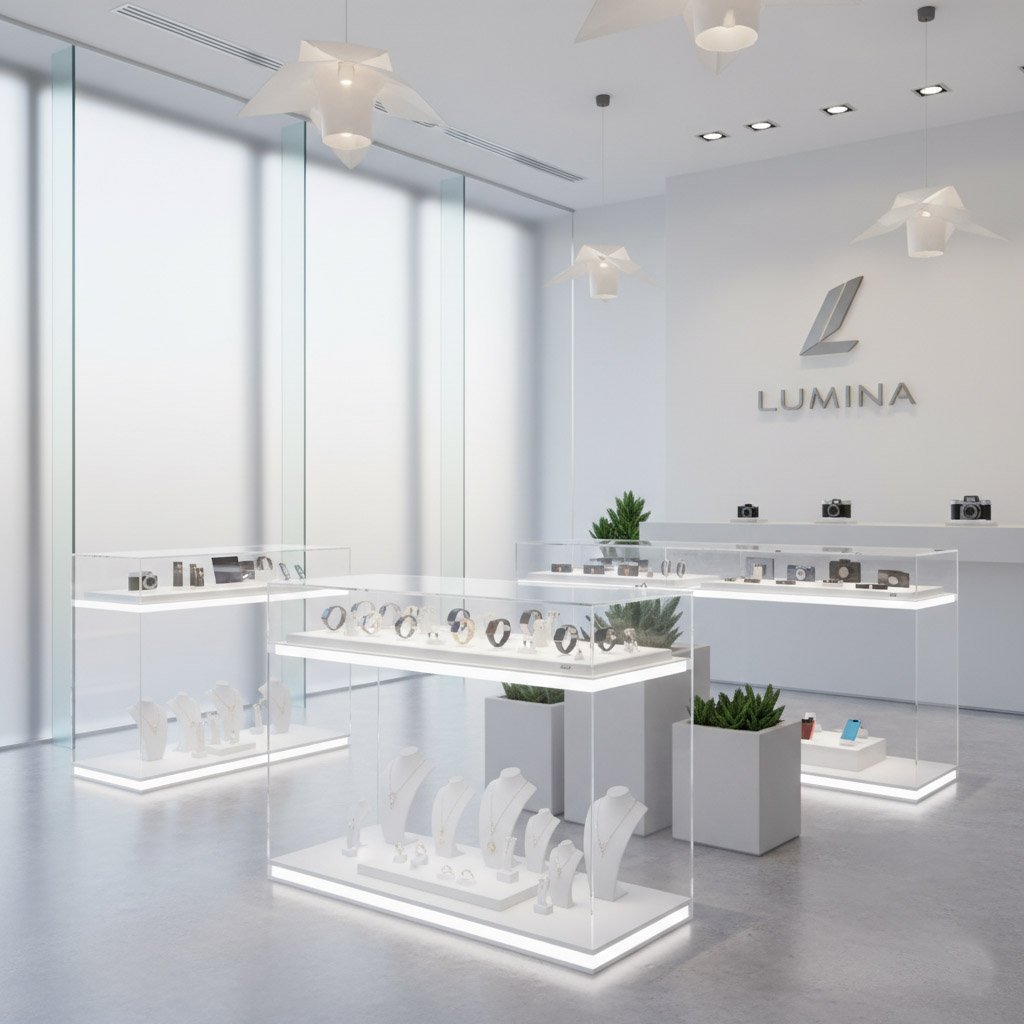
Why Acrylic is Popular
Acrylic has become one of the most widely used materials for retail displays. Unlike traditional glass, it combines strength with flexibility, making it an excellent choice for different store environments. The material feels light when carried, which reduces handling costs during setup and transportation. At the same time, it remains strong enough to hold various retail products securely. Shoppers often notice how crystal-clear acrylic looks, which allows items to shine without distraction.
Because of its clarity, the display itself almost disappears, leaving the spotlight on the merchandise. In addition, acrylic can be shaped with ease. Retailers can request small countertop boxes or tall vertical towers, and both designs are achievable with the same material. This versatility is exactly why many businesses prefer acrylic cases when building their store fixtures.
Furthermore, durability remains a strong point. The surface resists shattering much better than glass. If an accident happens, pieces do not break into sharp and dangerous shards. That makes it safer for both staff and customers. Since safety is always important inside stores, acrylic reduces risk while still offering elegance. When considered together, these advantages explain why so many retailers, wholesalers, and boutique owners look toward acrylic solutions instead of heavier and more expensive materials.
Benefits for Retailers
Retailers always look for value, and acrylic delivers. First, the clean and transparent surface highlights merchandise without blocking visibility. This feature increases customer engagement because products look closer and more appealing. At the same time, acrylic reflects light gently, which makes colors appear brighter and more attractive. When customers notice details clearly, they are more likely to make purchasing decisions on the spot.
Another advantage is the easy maintenance process. Staff members can clean acrylic quickly with basic supplies, which saves time during busy store hours. Efficiency in cleaning reduces labor costs, and stores remain neat and professional-looking all day. Acrylic also works well in different climates because it does not corrode or rust like metal. This long-lasting quality means that once a store invests in acrylic cases, they can use them for many years before considering replacements.
Cost plays a major role as well. Acrylic usually comes at a lower price than tempered glass, yet it still offers a high-end appearance. This balance of affordability and elegance allows retailers to maintain a stylish store image while protecting profit margins. In a competitive retail market, such cost efficiency becomes a powerful advantage. Therefore, many shop owners adopt acrylic not only as a practical choice but also as a smart financial decision.
Limitations of Acrylic
Although acrylic provides many benefits, it is not without limits. Retailers need to understand these boundaries to avoid problems later. One common issue involves scratches. Acrylic scratches more easily than glass, so cleaning must be done carefully. Using soft microfiber cloths and mild cleaners prevents damage. If rough materials are used, the display may lose its shine quickly.
Another concern is heat sensitivity. Acrylic can warp under high temperatures. For that reason, store owners should avoid placing displays near strong heat sources or in direct sunlight for long hours. When cases are exposed to intense light, the material may bend slightly and lose shape. This could harm the professional look of the store.
Weight limits also deserve attention. Thinner sheets cannot carry very heavy objects. If retailers expect to showcase large equipment, they should choose thicker acrylic sheets or combine the material with supporting frames. By understanding these restrictions, businesses can plan better and avoid costly mistakes. Knowing the limits also helps in setting realistic expectations and choosing the correct designs.
Versatility Across Markets
Beyond the typical store environment, acrylic display cases serve many industries. Jewelry boutiques use them to highlight delicate rings and necklaces. Electronics retailers adopt acrylic for small gadgets, headphones, or accessories. In gift shops, the material presents souvenirs elegantly without overwhelming the space. This wide range of applications shows how versatile acrylic can be.
The material also supports customization. Retailers can request branding elements such as logos printed directly on the surface. Some prefer colored edges to match their store theme. Others like frosted finishes for a softer look. Every variation remains possible without losing clarity and durability. That makes acrylic display cases more than just storage; they become an extension of brand identity.
Finally, international demand continues to grow. Wholesalers across the United States, Sweden, Australia, and many other regions rely on acrylic fixtures to serve local stores. Global shipping remains simpler thanks to the lighter weight compared to glass. This explains why acrylic displays fit not only small boutique owners but also large-scale suppliers who need reliable, cost-effective, and attractive solutions. When all these uses are considered, the material proves itself as one of the most practical and adaptable options in the retail industry today.
Tools and Materials Needed
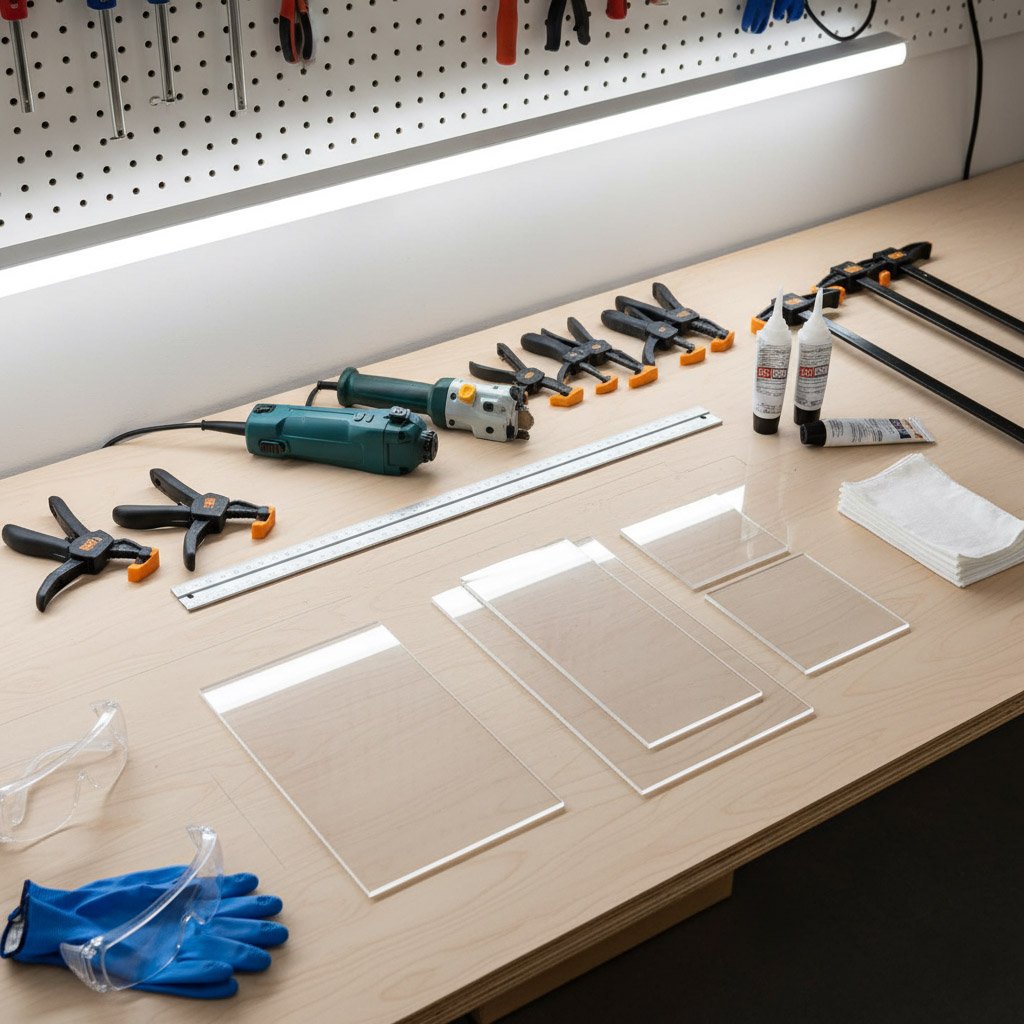
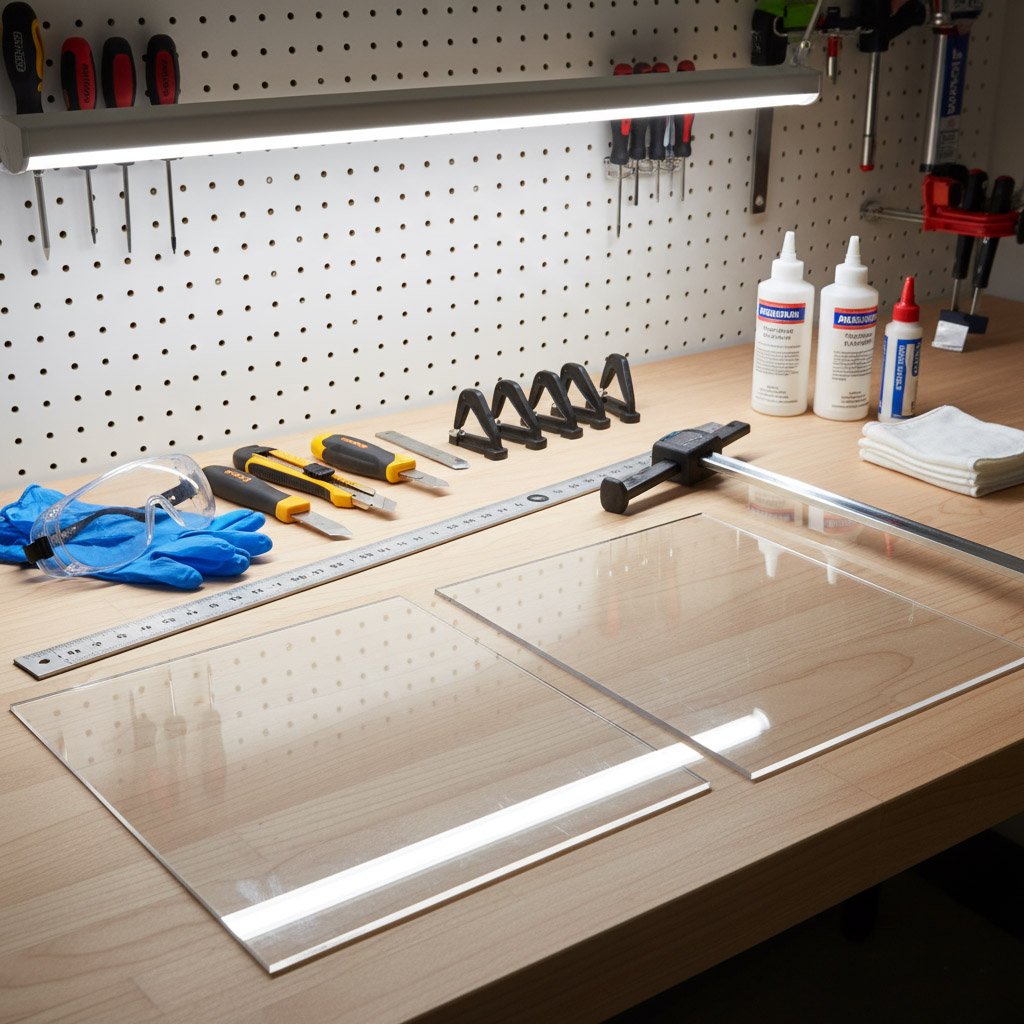
Essential Acrylic Materials
To begin the process, it is important to select the right materials. Acrylic sheets form the foundation of every retail display case. Thickness varies based on display size, and each option provides different levels of strength. Thin sheets work for small jewelry cases, while thicker panels are better for large displays. Reliable suppliers provide sheets that are free from scratches and offer consistent clarity. Choosing high-grade acrylic ensures that the final case looks professional and attracts customer attention.
Besides sheets, adhesives are necessary for construction. Specialized acrylic glue bonds edges seamlessly. Unlike regular glues, these formulas penetrate the surface and create durable joints. This results in a clean look that almost hides the seams. Hinges and handles are optional but often required for cases with access points. Small additions like rubber feet or corner protectors enhance both stability and appearance.
Precision Cutting and Drilling Tools
Once materials are ready, the next focus is on cutting and drilling. Clean cuts are vital to achieve a professional finish. A circular saw with a fine blade works for straight edges, while a laser cutter produces smooth lines and minimizes waste. Smaller hand tools can help with adjustments, but mechanical cutters save time for larger projects. Sandpaper or polishing tools finish the edges, giving them a smooth and safe surface.
In addition to cutting, drilling plays an important role. Holes are needed for hinges, locks, and handles. Standard drills can work, but bits designed for acrylic prevent cracking. Using the correct speed and pressure ensures accuracy and avoids damage. Each hole must align perfectly to maintain balance and structure. Transitioning smoothly from cutting to drilling avoids costly mistakes and creates a solid framework for later assembly.
Assembly and Securing Equipment
After cutting and drilling, assembly tools come into play. Clamps are the most essential here. They hold sheets in place while the glue cures, preventing movement and misalignment. Different clamp sizes may be used depending on the dimensions of the case. This ensures that panels stay tight and secure until the adhesive fully sets. Without clamps, panels may shift and create visible gaps. A stable setup during curing guarantees strength and clean results.
Additional equipment, like corner jigs or alignment guides, improves accuracy during assembly. These simple tools reduce errors and ensure consistent angles. Using them saves both time and material. Rubber mallets may help gently adjust panels without causing cracks. Even small alignment adjustments matter in the overall presentation. Transitioning from adhesive application to proper clamping makes the difference between a weak structure and a strong, long-lasting display case. Solid assembly relies on both the right adhesive and the correct supporting tools.
Safety and Maintenance Tools
While many focus only on building, safety tools are equally important. Protective gloves prevent cuts from sharp edges. Goggles protect eyes from acrylic dust during cutting and drilling. A dust mask ensures safe breathing in enclosed spaces. Proper ventilation helps reduce the effects of adhesive fumes. Safety equipment should always be present before starting the work. Without it, risks increase and accidents may occur.
Once the project is complete, maintenance tools extend the life of the equipment. Microfiber cloths clean surfaces without leaving scratches. Mild cleaning solutions keep acrylic clear and shiny. Storing tools in an organized way prevents damage and saves time during future projects. A dedicated toolbox makes every step smoother. Transitioning from safety to maintenance closes the loop. It ensures not only a safe building process but also long-term care for both tools and finished products.
Design Considerations
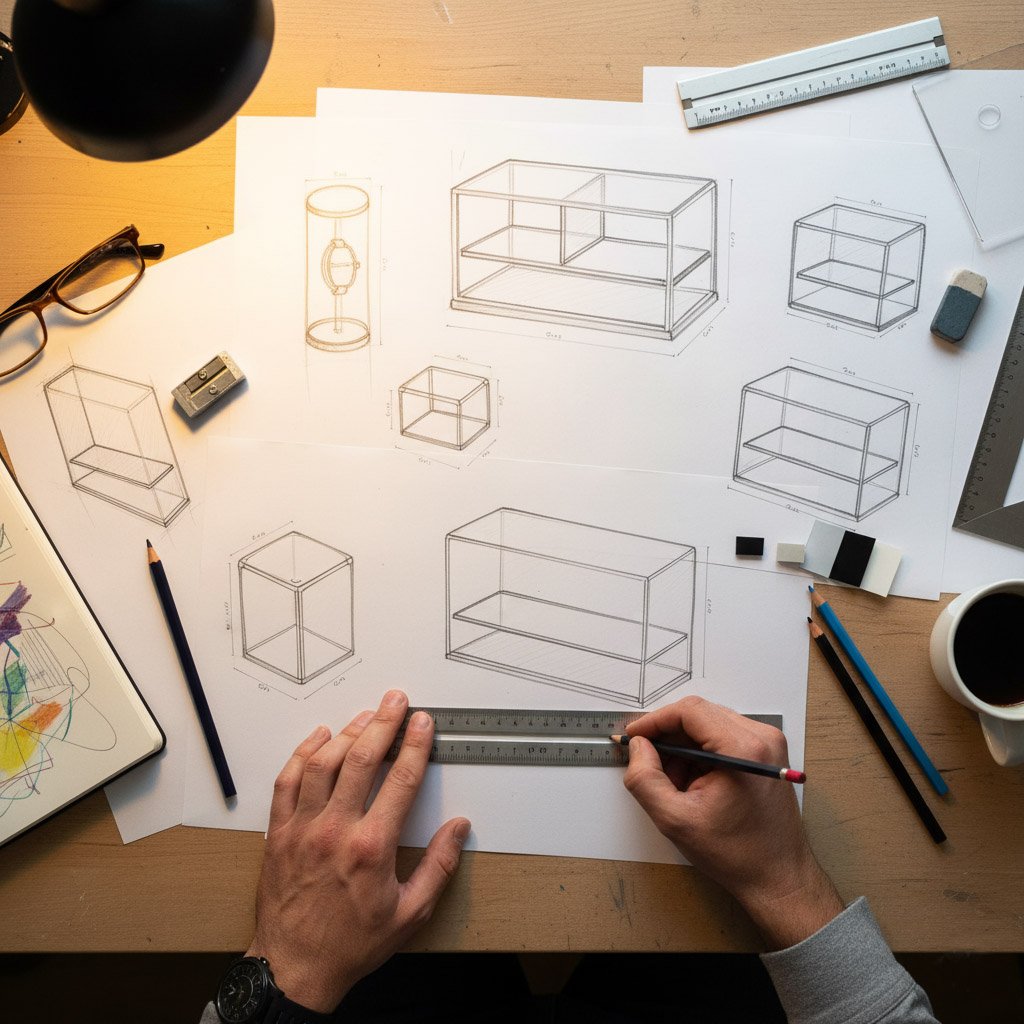
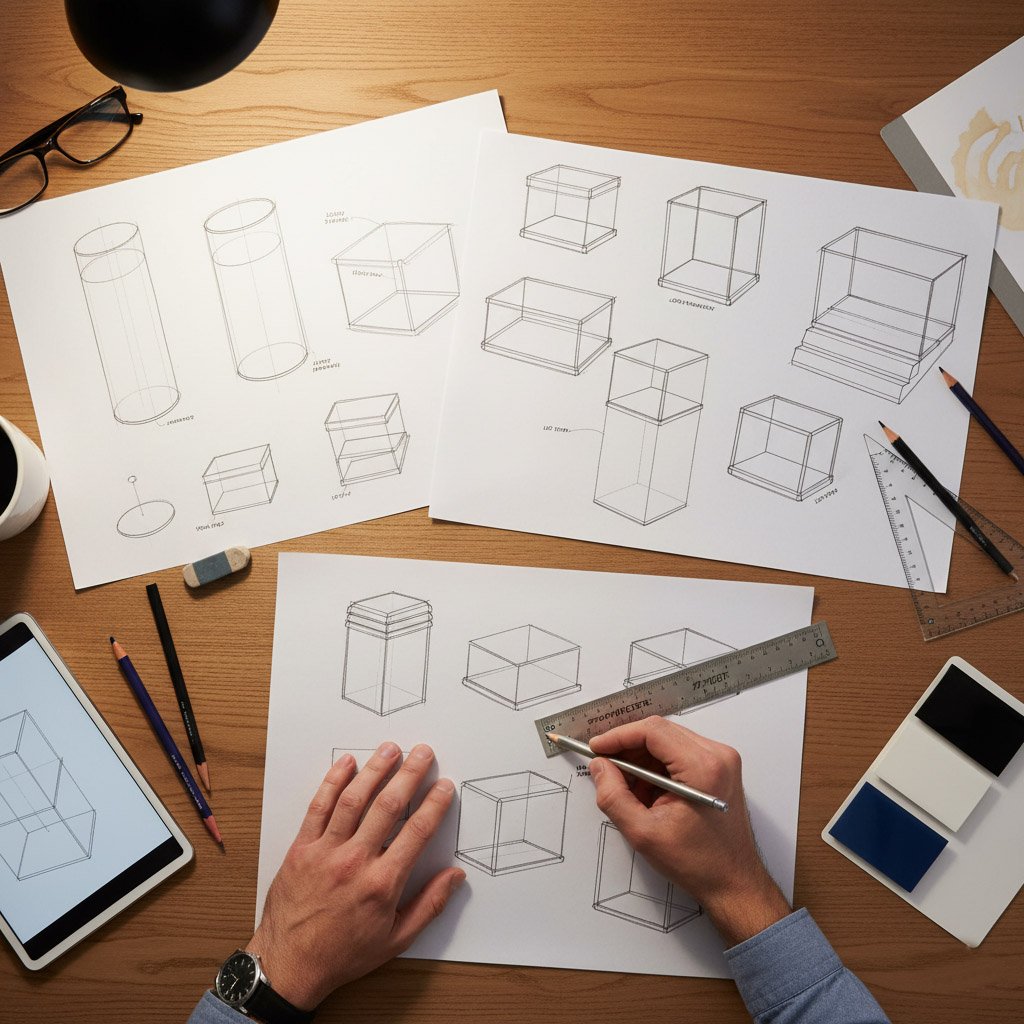
Choosing the Right Size
When creating a display, size becomes the first element to consider. Products differ in dimensions, so the case must suit them. A small accessory looks lost inside a large case, while a bulky product may feel cramped in a tiny one. Balance is key because customers notice proportions quickly. Clear measurements avoid waste and keep the project efficient.
Accurate sizing also ensures stability during use, since larger structures require thicker acrylic for support. With careful attention to these details, the final case delivers both visual appeal and durability, making products look impressive without overwhelming the viewer.
Furthermore, scaling decisions affect store space. A retailer may have limited floor area, so oversized displays could block movement. In contrast, undersized displays may fail to showcase enough items. The right choice creates harmony with the store layout and enhances traffic flow. By adjusting the width, height, and depth to match available space, the case becomes an integrated part of the retail environment.
Equally important, proportions influence customer perception. A well-sized case conveys professionalism and order, while a poorly sized one suggests neglect. Shoppers quickly form opinions based on these visual cues. Correct sizing shows attention to detail and communicates brand reliability. In retail, such signals often decide whether a buyer trusts the store. That is why precise measurement and thoughtful design must come before cutting or assembly, ensuring the final result feels intentional and polished.
Adding Functional Features
Beyond size, functional elements transform a simple case into a practical retail tool. Shelves, for example, allow vertical organization. This feature maximizes capacity and keeps products neatly separated. Without shelves, items may pile together, reducing visibility. Adding compartments supports diverse product ranges, such as separating premium items from everyday goods. These details improve presentation and guide customer focus effectively.
Next, access becomes crucial. A hinged door or sliding panel simplifies restocking. Staff save time and effort when they can open the case smoothly. Locks also play an important role in protecting valuable products. Shoppers appreciate the security, and retailers feel confident displaying higher-priced items. Such features add not only utility but also perceived value. A case with thoughtful features often becomes a long-term investment rather than a temporary fixture.
Transitioning from function to convenience, accessories enhance usability further. Handles make the operation easy, while rubber stoppers prevent noise or scratches during opening. Ventilation holes may be necessary for electronics or items sensitive to heat. Each feature contributes to user comfort and product safety. When functionality aligns with design, the display elevates both staff efficiency and customer satisfaction. This careful planning turns a basic structure into a multi-purpose retail asset.
Style and Aesthetic Choices
After covering size and function, appearance takes center stage. A display case serves not only as storage but also as a visual ambassador for products. Acrylic offers flexibility because it comes in clear, frosted, or tinted variations. Clear sheets highlight items directly, creating a modern, transparent effect. Frosted surfaces soften visibility and bring elegance. Colored panels add personality and match brand identity. Selecting the right finish ensures harmony with store design and attracts customer attention.
Moreover, shape influences style strongly. Straight edges communicate minimalism and order, while curved forms suggest creativity and softness. Corners can be sharp for a sleek look or rounded for safety and warmth. Retailers must align these design cues with their target audience. A luxury boutique may prefer minimalist straight lines, while a toy shop might embrace bright colors and playful curves.
Lighting also enhances aesthetics significantly. Integrated LED strips highlight products, draw focus, and create ambiance. Bright white light works well for electronics, while warmer tones suit fashion or jewelry. Lighting choices shape customer mood and elevate perceived product value. When style decisions include both material and illumination, the case becomes more than a container.
Balancing Cost and Quality
Design also involves financial planning. Every decision affects the budget. Thicker acrylic increases durability but raises material costs. Adding shelves, locks, or lights improves function but adds expenses. Retailers must weigh benefits against budgets carefully. A smart balance ensures displays remain profitable. Overspending on unnecessary features can reduce return on investment, while cutting too many corners may hurt brand image.
At the same time, quality cannot be ignored. Customers judge stores by fixtures as much as by products. A flimsy or poorly designed display communicates weakness and damages trust. Durable materials, clean joints, and polished finishes send a stronger message. They signal care, responsibility, and professionalism. These signals influence customer decisions subtly but powerfully.
Transitioning from cost to value, the long-term picture matters most. A well-built case lasts years, reducing replacement costs. A poor-quality case may break within months, forcing retailers to spend again. By investing wisely, retailers save money in the long run and maintain consistent branding. Balancing cost with quality ensures that displays serve as assets, not liabilities. This approach strengthens customer loyalty and supports sustainable growth.
Why Fairwill Display

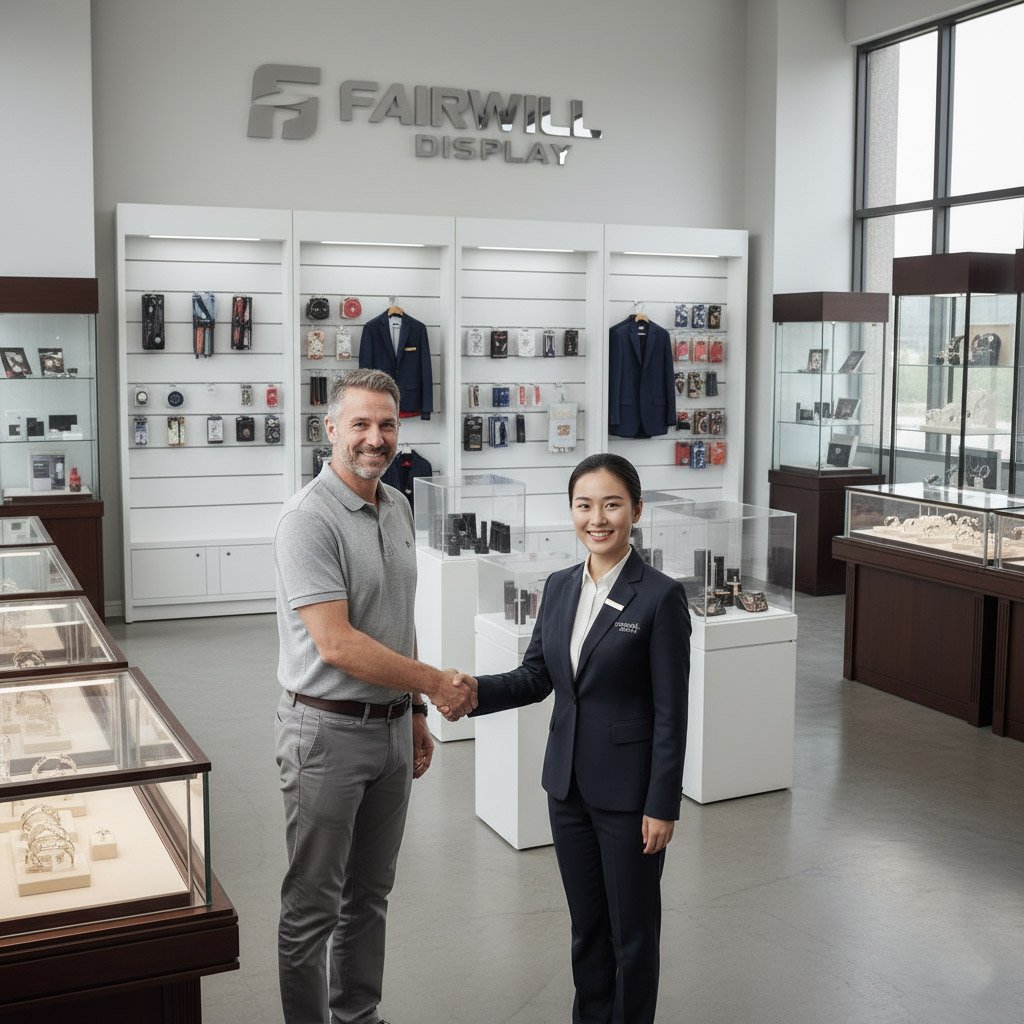
A Partner Who Understands My Needs
When I first looked for a supplier, I needed someone who understood my challenges. Fairwill Display quickly proved to be that partner. Instead of pushing products, they listened to me carefully. They asked about my store type, target market, and budget. That showed me they care about long-term cooperation, not just one order.
I also appreciated their clear communication. Every question I asked received a professional answer. They gave me examples from other projects to help me visualize results. That made my decisions easier and saved me valuable time. With Fairwill Display, I never felt alone in the process. I always had expert guidance.
Most importantly, they understood the balance between price and quality. As a wholesaler, I cannot afford overpriced fixtures. But I also cannot risk poor quality. Fairwill Display gave me solutions that achieved both. That gave me confidence to continue working with them.
Professional Advice for Every Project
Each time I worked with Fairwill Display, I received tailored advice. They explained material differences, such as the durability of tempered glass or the stability of E1 grade boards. This helped me choose the right options for each project. I realized I was learning from professionals who know the industry deeply.
Their design team also provided guidance on display layout. They explained how slatwall merchandisers could maximize space, or how glass showcases could highlight premium products. Those insights made a clear difference in my store presentation. I noticed customers spent more time looking at products because of these smart design choices.
Another benefit was their advice on logistics. Since I am overseas, shipping is always a concern. Fairwill Display explained packaging methods, loading options, and customs processes. That reduced my stress because I knew my goods would arrive safely. Having this kind of professional support is rare, and it set them apart from other suppliers.
Reliable Quality at Competitive Prices
One of the biggest reasons I continue to choose Fairwill Display is its quality. Every product I received matched the description. The glass showcases were clear and strong. The slatwall panels were smooth and durable. The fixtures felt solid and professional. That consistency is exactly what I need for my business.
At the same time, the prices were competitive. They gave me factory-direct pricing, which kept my costs low. For me, this balance is crucial. I can offer my customers affordable store fixtures without worrying about defects. That means better profit margins and fewer complaints.
Even better, I noticed that Fairwill Display never cut corners. They saved me money but did not compromise on safety or finish. I could tell the difference compared to the cheaper suppliers I had tried in the past. This reliability gives me peace of mind.
Long-Term Support and Partnership
Fairwill Display is not just a supplier for me; they are a long-term partner. They always check in after orders to see if I am satisfied. If I need advice on future projects, they respond quickly. This support makes me feel valued as a client, not just a number.
They also share new ideas and product updates. For example, they introduced me to new fixture designs that matched trends in Europe. That allowed me to stay competitive in my local market. Their knowledge of international standards helped me avoid mistakes and remain confident in my purchases.
Because of their consistent service, I trust them with repeat orders. I know that when I send an inquiry, they will respond with professionalism, clarity, and fair pricing. This trust is the foundation of our partnership, and I see it growing stronger with every project.
